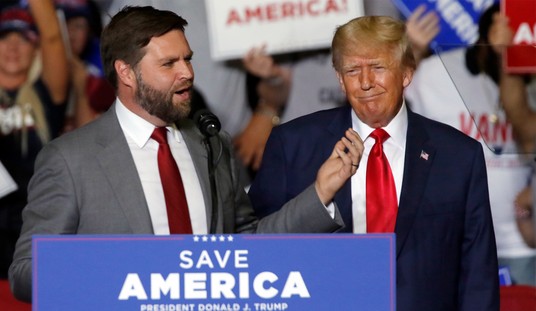A month or so ago, our country briefly debated military strategy in the wake of the Afghanistan withdrawal announcement. The following week, we anticipated major unrest as a jury reached a certain verdict in a courtroom in Minnesota. Less recognizable, but stubbornly true: the United States pivot this year is not to Asia, but places like Minneapolis, Minnesota, and Washington, DC. At 3,500, we’ve got only about 500 more soldiers in Afghanistan than we had in downtown Minneapolis in expectation of a short-term rebellion there. As we removed ourselves from foreign entanglements, many likely recognized small contingents would remain for a time, like the 900 or so in Syria. But it’s doubtful that that those chanting to bring the troops home envisioned 2,300 or so on active duty not far from Tortilla Coast and We the Pizza on Capitol Hill. Another old protest chant comes to mind too, the melody of which is familiar but whose words require adjusting for our era: The People Divided Can Surely be Defeated.
We continuously struggle to recognize the era that we’re in, failing to connect the physical manifestations of our division to the day-to-day surface debates that consume our time. Those physical markers of division – like the now regular deployment of National Guard troops in response to political unrest – require attention. They represent a schism that is deep and promises additional peril, a division with its own ill effects. Three perilous trends accelerate in the United States as we speak. They weaken us, and that weakness is now sensed and tested by foreign powers, threatening to plunge the United States into a major foreign conflict in the very years that the consensus for our federal union is at a historically low ebb.
The first perilous trend is that our division is now so prominent it’s a thing our enemies can plan to. When Russia encircled Ukraine in a traditional blockade posture and tested out de facto control of international waters in a notable percentage of the Black Sea, how did we respond? The U.S. responded with only strongly worded statements and actually cancelled two scheduled naval deployments there. For all the realism we celebrated over the past decade, on the horizon now is the end of the era where the bipartisan U.S. strategy of generally looking away as rising powers change borders and create new territory is consequence free.
So little of American statecraft of the past decade – that of measured responses, and targeted military sales to certain allies, and publicly announced economic penalties – resulted in a change in that annoyingly persistent phrase used by the military: facts on the ground. That’s not a critique of the bipartisan embrace of realpolitik, nor an endorsement of what some call ‘wars of choice,’ just a recognition of where we are now as foreign calculations shift and our actions find their consequences more readily.
Recommended
Sounds less like evidence of division than of unity right? A general consensus embraced by both parties and a wide swath of the American people to generally stand by and watch genocide and foreign powers redraw borders. But what happens when we are really tested from the outside? Will we bond together like in conflicts past?
The early volleys of our coming conflicts may not look like world war or feel like total war but could quickly metastasize into one or the other. We’re more stuck in an End of History mindset than we realize, preventing us from recognizing war as a real possibility; it seems an alien concept. Further, there are no Grenadas in the bunch – whether it be an irreversible Chinese occupation of Taiwan, a fuller Russian invasion of Ukraine recognizable beyond the polite word ‘incursion,’ or an Iranian nuclear weapons breakout – the stakes are high, and they are dangerous. The presumption that a tangible foreign threat will automatically unite the American polity grants a legitimacy to the formal mechanisms and institutions leading our response that is no longer certain in an era of capital siege and urban riot. Can a country unite for a military effort if 50% of its citizens don’t believe the civilian commander of the military was legitimately elected? What force will a Senate war resolution have if half of the country believes the Senate is little but a racist vestige of the Jim Crow era? What happens when Commander in Chief and the Not-My-President era meet?
In the follow up to this piece I’ll detail two more division-sped trends that place us in peril, both even closer to home.
























Join the conversation as a VIP Member